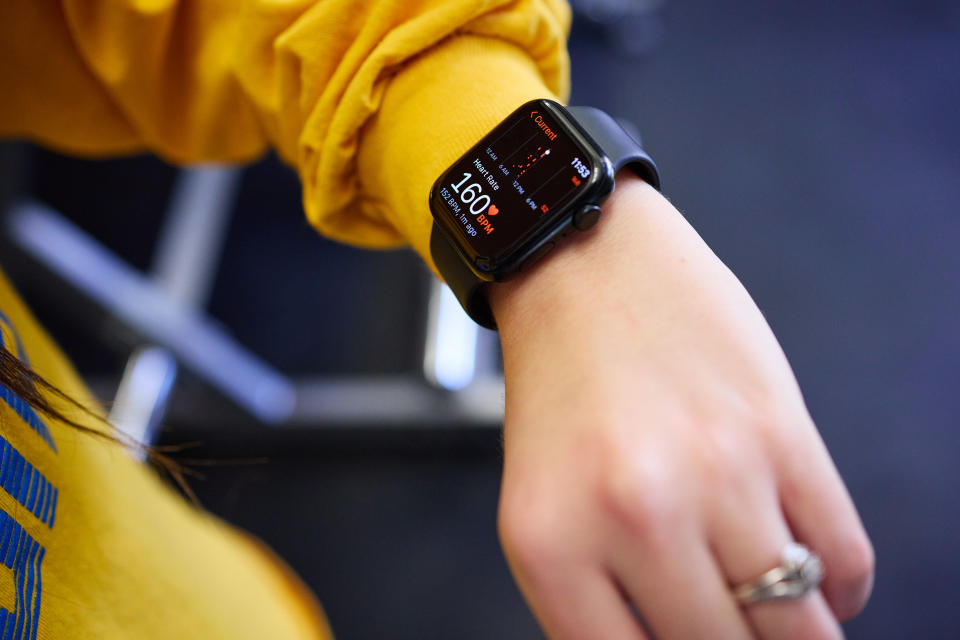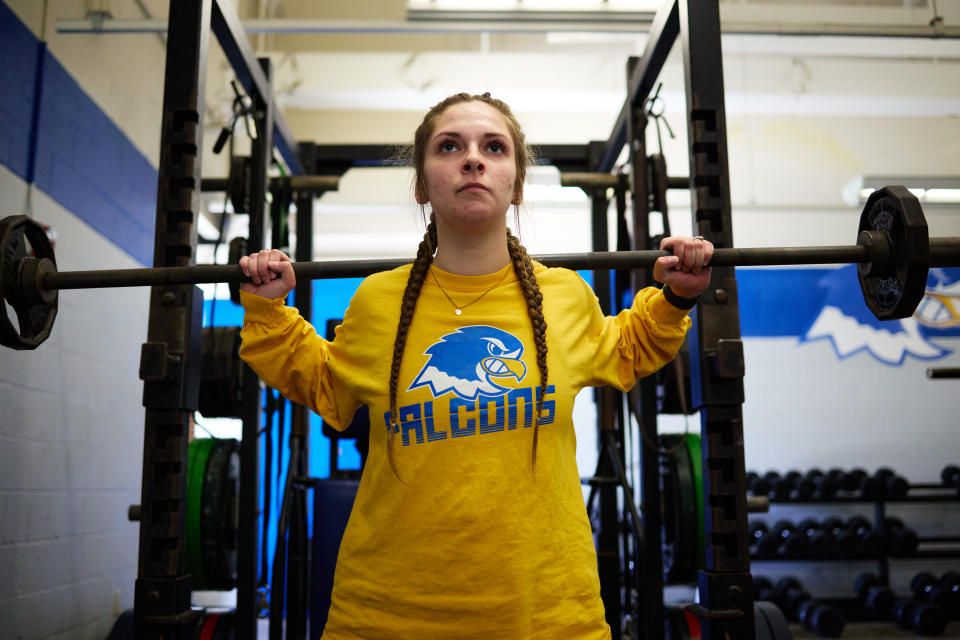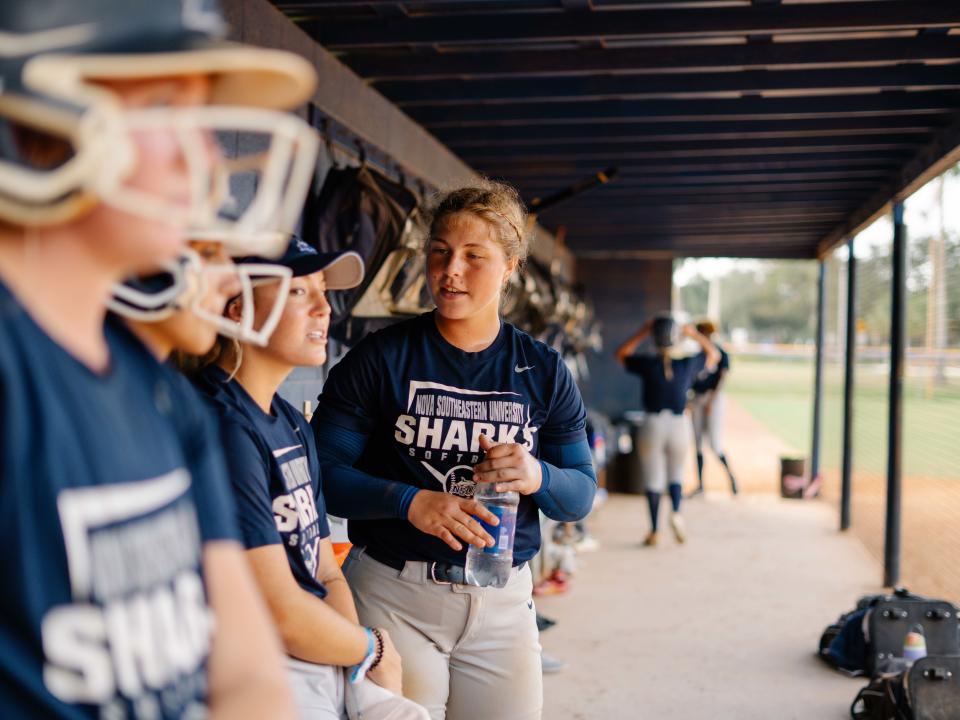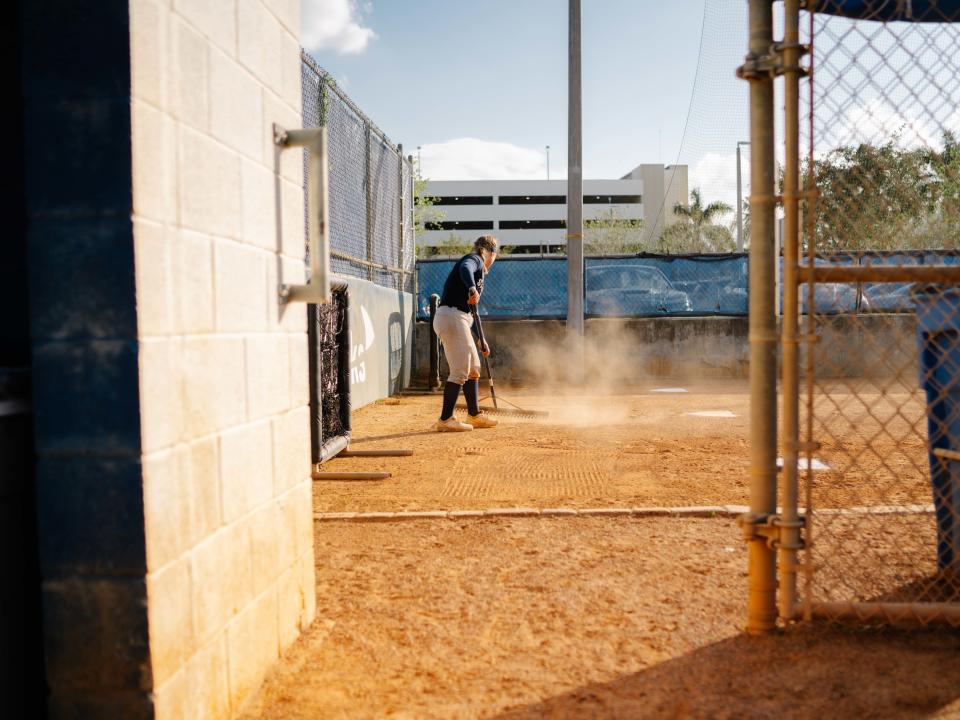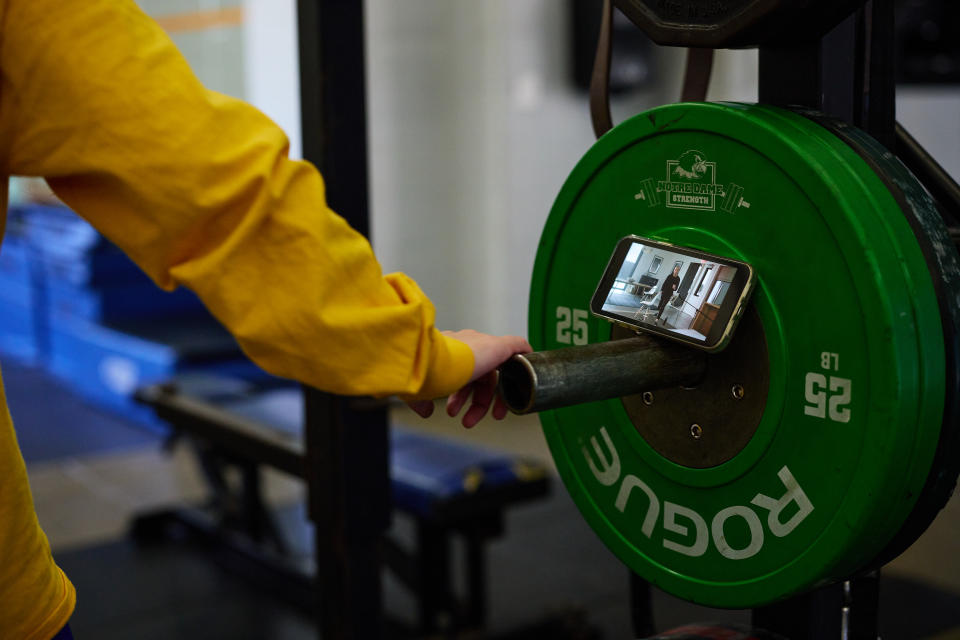They’re young and athletic. They’re also ill with a condition called POTS.
Kaleigh Levine was running drills in the gym with her lacrosse team at Notre Dame College in South Euclid, Ohio, when everything turned black.
“The coach wanted me to get back in the line, but I couldn’t see,” she remembered.
Her vision returned after a few minutes, but several months and a half-dozen medical specialists later, the 20-year-old goalie was diagnosed with a mysterious condition known as POTS.
First described more than 150 years ago, the syndrome has proliferated since the coronavirus pandemic. Before 2020, 1 million to 3 million people suffered from POTS in the United States, researchers estimate. Precise numbers are difficult to come by because the condition encompasses a spectrum of symptoms, and many people have still never heard of it. Recent studies suggest 2 to 14 percent of people infected with the coronavirus may go on to develop POTS.
The syndrome tends to strike suddenly, leaving previously healthy people unable to function, with no clear cause. In recent years, doctors specializing in the condition have noticed a curious and disproportionate subset of patients: young, highly trained athletes who are female.
Short for postural orthostatic tachycardia syndrome, POTS is diagnosed when a patient’s heart rate goes berserk, jumping way above normal when changing position from lying down to standing.
Teens and young adults at peak fitness are generally regarded as being extremely healthy, so the burst of POTS cases has puzzled doctors.
Several factors may be conspiring, said Robert Wilson, a neurologist who runs the Cleveland Clinic’s POTS practice. It could be that women of childbearing age are more vulnerable to inflammation. It could reflect the damage that comes with being hit with a virus unknown to humans until 2020. And the stress associated with repetitive physical exhaustion could leave athletes at risk.
“It’s something of a perfect storm of susceptibility,” Wilson said.
Dongngan Truong, a pediatric cardiologist at University of Utah Health, speculated that the surge in cases might reflect athletes’ often unusual physiology, or could simply be reporting bias.
“It could just be athletes generally keeping in touch with their bodies more,” Truong said.
- - -
The heart of an athlete
Concerns about the health of athletes made headlines early in the pandemic - but the focus wasn’t on POTS. It was on another heart condition.
Prominent sports figures - including Boston Red Sox pitcher Eduardo Rodriguez - revealed that after enduring covid-19, they experienced inflammation of the heart muscles known as myocarditis, a leading cause of sudden death in athletes.
The NCAA started a registry to track athletes. Professional sports teams and schools introduced heart screenings before allowing athletes to return to play. It turned out myocarditis was not as common as feared, and a study published later in the journal Heart showed that elite athletes who were affected had no long-lasting heart damage.
But the scrutiny led to a wave of important research.
At the University of Alabama at Birmingham, Sara Gould, an orthopedic surgeon, and Camden Hebson, a pediatric cardiologist, opened a sports clinic in 2021 to help young athletes navigate their health post-covid. It drew patients from across the South and beyond, but the physicians were surprised to find that few of the patients had myocarditis. Most were coming in with POTS.
“And POTS is a lot of what we see to this day,” Gould said.
When oxygen flow to the brain is reduced, it sparks sometimes vague and confusing POTS symptoms including lightheadedness, fainting, nausea, tremors, fatigue, headache, brain fog, blurry vision, palpitations and chest tightness, and shortness of breath. The impact can be measured by elevations in heart rate when people change position.
Many athletes, especially those in endurance sports, tend to have lower resting heart rates than non-athletes - making the jumps even bigger. An athlete’s resting heart rate might be 30 to 50 beats a minute, while another person’s resting heart rate sits at 60 to 100 beats.
A 19-year-old female college volleyball player described in a case study by the American Medical Society for Sports Medicine had a heart rate that jumped from 56 beats a minute to 120. A presentation from North Central College in Illinois details the illness of a nationally ranked high school swimmer whose heart rate spiked from the 40s and 50s to as high as 172 when moving from lying down to standing.
Gould and Hebson quickly noticed that most of their patients could be categorized into two groups.
The larger cohort was predominantly female and included a lot of cross-country runners and volleyball players. Many could not pinpoint a clear event that marked the onset of symptoms although most had experienced covid or another viral illness in the recent past.
“It’s not a lock-and-key situation with just anybody getting covid and then POTS,” Hebson theorized. “It’s that some patients had a predisposition to POTS to begin with, and then something comes along - it could be mono or covid or something else to give them a push.”
The second group was dominated by men, including football players, and they reported experiencing symptoms of dysautonomia - the bouncing heart rate that is the main characteristic of POTS - after a concussion.
Their findings, published in the journal the Physician and Sportsmedicine, are consistent with the first documented cases of POTS. During the Civil War, POTS was among a number of distinct syndromes once known collectively as soldier’s heart because so many members of the military exhibited symptoms. Medical historians speculate that head injuries during combat triggered some cases.
Gould believes several aspects related to being an athlete might increase susceptibility to the syndrome.
Some of her patients have hypermobility in their joints, meaning they have greater than normal range of motion. That can be an advantage in sports including gymnastics, diving, swimming and hurdles, but it has also been associated in studies with POTS. Gould described hypermobility as being related to “blood vessels being more stretchy,” which could impact heart rate and blood pressure.
Gould said many clinic patients tend to be taller than average, which can be an advantage in certain sports. Gene association studies have shown that height increases the risk of heart palpitations and circulatory problems - symptoms seen in people with POTS.
Intense exercise may itself be a trigger. In a two-hour practice, athletes can lose 2 to 3 percent of their body weight in water, which can further upset how blood flows and exacerbate POTS symptoms.
Since the end of the 19th century, scientists have observed that intensive exercise can reshape the heart. Athletes’ hearts tend to be bigger and pump more slowly. Exercise requires more oxygen, so the heart has to work more vigorously and over time gets bigger and thickens. When an athlete is resting, the heart does not need to work as hard so it pumps less.
The changes make the heart more efficient, but the stress of athletic exertion has other impacts on the body.
“We learned a lot from covid athletes in 2020-21 and about how having a really conditioned heart may be something that plays a role in different conditions,” Wilson, the Cleveland Clinic neurologist, said.
Wilson has been collecting data on POTS patients since 2017. In a database of several hundred people, women of childbearing age represent a disproportionately high percentage of patients. Scientists suspect women may be more at risk because they are more often in a pro-inflammatory state - during menstrual cycles and pregnancy - in which the immune system readies itself to fight against something that is potentially harmful.
Another early finding is that 90 percent of the POTS patients had been exercising regularly before being struck with the condition. Only 28 percent of Americans exercise regularly, according to the Centers for Disease Control and Prevention.
- - -
Suddenly ill
Aubrey Hutzler, 19, a catcher for the women’s softball team at Nova Southeastern University in Davie, Fla., noticed she wasn’t herself when jumping up from a crouching position to catch a ball thrown to home plate while practicing with her high school team.
“I was training nationally and playing in front of college coaches and then suddenly I couldn’t handle a normal day. It was really hard mentally,” Hutzler said.
Sophia LeRose had been in the goal for a preseason lacrosse game for Duke University, when she felt like her heart was going to bounce out of her body. She grabbed the side of the cage.
“I felt like I had drunk five Red Bulls,” she said. She was helped off the field, and when the athletic trainer measured her heart rate, it was 180 beats per minute, whereas it was typically in the 50s. While doctors don’t know what triggered the onset of her symptoms, she suspects she got a virus or parasite while on a winter mission trip to Colombia, which may have played a role.
Doctors are experimenting with treatments for POTS, but there’s no quick fix.
Hutzler has been living with POTS for more than five years. It took about a year of physical therapy, blood pressure medication and wearing compression sleeves before she started to return to her old self.
LeRose increased salt and fluid intake and was well enough to play some minutes at the end of her final season. “The fact I was able to get back on the field was awesome, and my team was so supportive,” she said.
LeRose, now 24, finished her graduate degree, works in Chicago and still struggles with POTS symptoms while trying to rebuild her strength and endurance.
“They told me I would be lucky if I was able to run a couple of minutes, and I actually just got back from a 45-minute run class and did four miles. I’m working my way up,” she said.
- - -
‘Being misunderstood’
Levine said her POTS symptoms may have started in early childhood - she had an unusual set of on-again, off-again leg pains and nausea. Now, more than 15 years later, she’s still struggling.
On a recent weekday, she was lying with her legs propped up on the wall filming a TikTok video, explaining that she’d experienced blood pooling because of POTS. It was a typical day in August, and she started the day by taking medicine and Liquid I.V., an electrolyte supplement that packs 500 milligrams of sodium.
She started lacrosse when she was 9 and played so well that by eighth grade, colleges were making recruitment offers. The first three years she played for Notre Dame College, Levine had few health issues other than a bout of covid her freshman year that wasn’t too bad.
Something changed in 2023. Not long after she blacked out during the drills, she did so again in the shower and then in her living room. When she was diagnosed with POTS at the Cleveland Clinic, it was almost a relief, she said.
She soon made the difficult decision to stop playing the sport she had loved for so long. Now a senior, Levine, who is studying marketing and communications, misses her teammates but says she has no regrets and is putting her energy into other pursuits, such as trying to raise awareness of POTS. In addition to making TikTok videos, she helps lead an online support group and works on a podcast.
“I always give 100 percent and do the best that I can and felt like I was being misunderstood,” she said. “I was almost getting punished for being sick for so long that having some answers - I was happy.”
Related Content
The horse wars of Stormy Daniels
Alone in a bathroom: The fear and uncertainty of a post-Roe medication abortion
How Donald Trump’s mug shot became a defiant and divisive 2024 symbol
